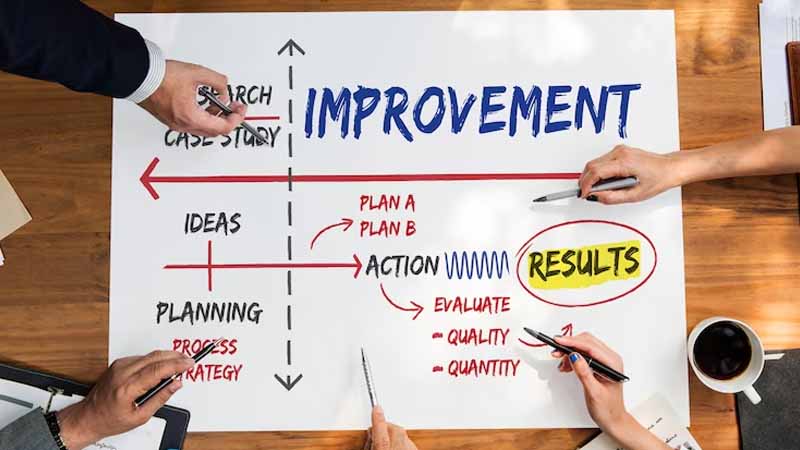Enhancing Your Wellness Program: Identifying Areas For Improvement

Wellness programs have gained widespread recognition in the corporate world for their potential to boost employee well-being, increase productivity, and reduce healthcare costs. However, the journey toward an effective wellness program doesn't end with its implementation; it's an ongoing process of evaluation, refinement, and adaptation.
In this blog post, we will delve into the critical steps needed to understand, evaluate, and enhance a wellness program. The key lies in continuous assessment and a proactive approach to align the program with organizational goals and participant needs.
II. Understand Your Wellness Program
Begin by providing a detailed overview of your current wellness program. Outline its core components, such as health assessments, fitness programs, mental health support, and any other initiatives. Explain the specific goals and objectives the program aims to achieve, whether it's reducing stress, promoting healthy habits, or improving overall employee morale.
Delve deeper into the different aspects of your wellness program. Talk about the specific activities and strategies that are being implemented, such as fitness challenges, mindfulness sessions, nutritional workshops, or any other initiatives. Discuss how often these activities occur, who leads them, and how participants can get involved.
III. Gather Feedback and Data
Engage participants and stakeholders to share their experiences and opinions about the wellness program. Let them know their feedback is valuable and can help shape the program's future. Create anonymous channels, like suggestion boxes or online surveys, to encourage honest input.
Employ a mix of data collection methods, such as surveys, one-on-one interviews, and focus groups. Use surveys to gather quantitative data, allowing participants to rate their satisfaction levels and provide specific metrics. Additionally, conduct qualitative interviews and focus groups to gain deeper insights into their experiences and suggestions.
|
Data Collection Method |
Purpose |
Key Insights Obtained |
|
Surveys |
Quantitative data collection |
Satisfaction levels, participation rates |
|
Interviews |
Qualitative insights |
Detailed experiences, suggestions |
|
Focus Groups |
Group qualitative insights |
Group dynamics, shared perceptions |
|
Participation Analysis |
Quantitative participation |
Program popularity, engagement patterns |
Dig into the data to understand participation rates, outcomes of wellness activities, and the level of engagement from employees. Analyzing this data will help identify which programs are most successful and where improvements are needed. Look for trends, patterns, and correlations to draw meaningful conclusions.
IV. Evaluate Effectiveness
Evaluate the program's impact on participants' overall well-being by assessing changes in their physical health, mental well-being, stress levels, and job satisfaction. Utilize surveys, health assessments, and feedback to measure these aspects before and after engaging in the wellness program.
Assess how well the wellness program aligns with the organization's broader goals and objectives. Evaluate whether the program is contributing to a healthier and more productive workforce, reducing absenteeism, enhancing employee engagement, and aligning with the organization's values and mission.
Analyze the costs associated with the wellness program, including expenses for activities, resources, and incentives. Measure the program's return on investment by comparing the costs against the benefits, such as reduced healthcare costs, increased productivity, and improved employee retention.
VI. Identify Areas for Improvement
Share the common challenges and limitations that were identified through feedback and data analysis. These could range from low participation rates to issues with program accessibility, communication barriers, or lack of awareness. By recognizing these challenges, you can tailor solutions to address them effectively.
Highlight specific areas where the wellness program could be enhanced to better meet the needs and preferences of participants. This could include introducing new activities, modifying existing ones, providing more flexibility in scheduling, or improving communication about the program.
VII. Prioritize Improvement Areas
Offer a structured approach for prioritizing improvement areas based on their potential impact and feasibility of implementation. Consider factors like potential benefits, ease of implementation, cost implications, and alignment with organizational goals.
Discuss effective strategies to focus efforts on high-priority improvement areas. This could involve creating action plans, assigning responsibilities, setting timelines, and regularly reviewing progress to ensure successful implementation.
VIII. Propose Enhancements and Solutions
Present actionable recommendations for enhancing the wellness program based on the identified areas for improvement. These recommendations should be practical, feasible, and aligned with the organization's goals and participant preferences.
Share actionable suggestions and best practices to address the specific challenges identified in the feedback and data analysis. Provide detailed steps and strategies that organizations can implement to overcome these obstacles and enhance the overall program effectiveness.
|
Enhancement Category |
Proposed Enhancements |
|
Communication |
Increase communication about the program through regular emails, company intranet, and posters. |
|
Flexibility |
Introduce flexible timing for wellness activities to accommodate different work schedules. |
|
Health Screenings |
Offer regular health screenings, including blood pressure checks and cholesterol screenings. |
|
Mental Health Support |
Incorporate mindfulness sessions, stress management workshops, and access to mental health apps. |
IX. Engage Stakeholders
Emphasize the significance of involving stakeholders in the improvement process. Highlight how involving participants, management, and other relevant departments ensures that the enhancements made are inclusive and aligned with the diverse needs of the organization.
Encourage collaboration and seek input from various stakeholders to foster a collective effort in enhancing the wellness program. Emphasize the value of diverse perspectives and how they contribute to a well-rounded and effective wellness initiative.
Conclusion
In conclusion, a wellness program is a dynamic entity that needs constant evaluation and enhancements to stay effective and beneficial. By regularly gathering feedback, evaluating impact, and addressing areas for improvement, organizations can create a wellness program that truly supports the well-being of their employees.